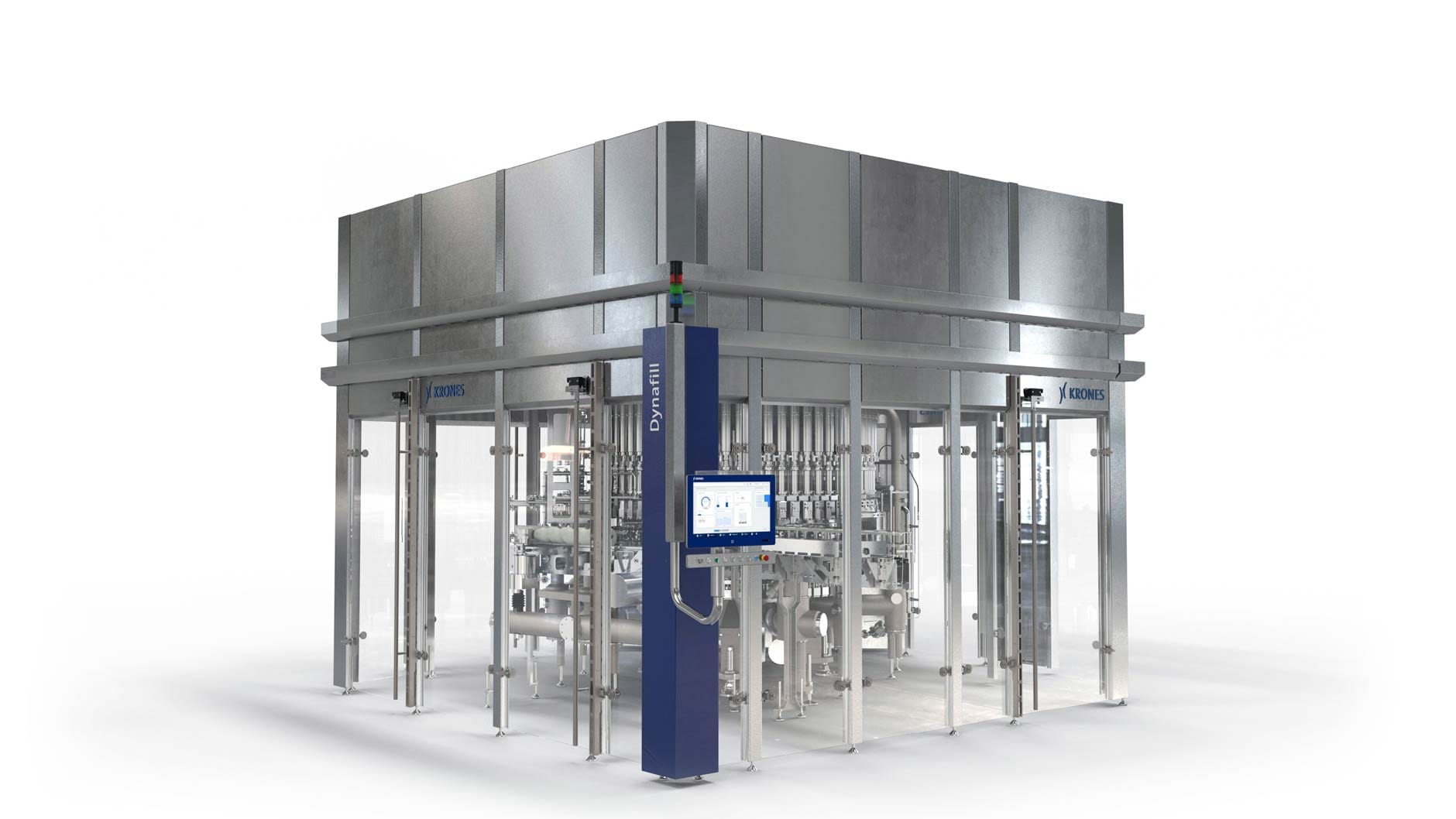New energy and line concepts for beer filling

One of the vital issues for any forward-looking brewery is this: How can I save energy throughout the production process, in order to put it on a more sustainable footing? Steinecker’s answer to this question is called Brewnomic. This concept developed by the Krones subsidiary enables a brewery to be energy-self-sufficient by smartly using and recovering the residual materials from the brewing and filling processes. Brewnomic consists of several modules, many of which relate to the brewing process. But systems and lines used in the bottling operation can also contribute to overall sustainability. The Dynafill, which combines filling and crowning on a single functional unit, fits in neatly here – for a number of reasons which in combination offer a whole series of rewarding benefits.
This new type of filling into a vacuum is the basis for all other spin-offs and advantages. Taking a look at the conventional filling process is well worth the effort because it helps understand the reasons behind the new one. In a conventional filling process, the filling temperature, at around six degrees Celsius, is relatively close to the starting temperature of one degree Celsius, at which most beers are stored. If a brewery were to increase the filling temperature, it would also have to provide for longer treatment times. As a consequence, conventional fillers would have to be significantly larger for the same output.
Filling into a vacuum, by contrast, which the Dynafill has translated into shopfloor reality, combines a number of advantages: Firstly, the filling process proper is significantly shorter, taking a mere 0.5 seconds. And secondly, filling temperatures of up to 30 degrees Celsius are possible without the need for a larger filler.
Energy savings
So the smaller footprint is one – admittedly extremely persuasive – benefit. But what advantages does the warm-filling option offer when it comes to upgrading sustainability levels? Quite a few, as the following examples show:
- Lower water and heat consumption during bottle cleaning: The higher filling temperature shifts the temperature difference between that of the cleaned empty bottle and the filling temperature. This means higher discharge temperatures at the washer are possible, and less energy is consumed in the washing process since the empty bottles do not have to be cooled down so much after washing.
- No warmer required: When the filling temperature is low and the ambient temperature high, a warmer is needed to avoid condensation on the filled bottles. With warm filling in the Dynafill, a warmer can either be dispensed with entirely or uses significantly less energy for warming the bottles.
- It is possible to do without a tunnel pasteuriser: Filling and crowning the bottles in a single process step reduces the microbiological risk of contamination in the filled but not yet crowned bottles. A flash pasteuriser in combination with the Dynafill is thus sufficient to ensure an impeccable product quality.
Should pasteurisation nevertheless be necessary or desired, significant amounts of energy can be saved here as well because the temperature difference between filling and pasteurisation temperature is substantially smaller, which means less energy is required for pasteurising.
New line concepts conceivable
All of the above factors add up to quite an impressive number of rewarding advantages. However, the principle of warm filling provides much more than “merely” saving valuable energy. Thanks to the Dynafill in combination with a higher filling temperature, customers can for their investment in new kit plan entirely new types of machine configuration – and thus fresh line concepts. They can do this because warmer and tunnel pasteuriser are no longer needed and the Dynafill takes up significantly less space than a conventional filler plus crowner:
- The combined machine’s footprint is substantially smaller since transfer sections and a separate crowner are dispensed with.
- If there is a sudden machine stop, no emptying sections are needed at the conveyors downstream of the filler because only crowned bottles leave the machine.
- With the vacuum-filling process, the higher temperature does not affect the filler size or the number of filling valves.
Factoring in all of these space-saving options opens up a whole new set of design possibilities for greenfield projects. Firstly, the machine’s footprint is significantly smaller, and secondly the same outputs are possible for the agreed reference bottle and for all other container sizes. That means entirely new line and conveyor layouts can be planned.
But any breweries considering the Dynafill as a complement for their existing filling line also benefit from the substantially smaller space requirement. And that’s not all: Thanks to the Dynafill, increases in output that have so far been inconceivable are now possible on the same, small line footprint. To put that in perspective: A conventional Krones Modulfill with a pitch circle diameter of 5,760 millimetres and 176 filling valves would be needed for an output of 62,000 bottles per hour, whereas the Dynafill makes do with a pitch circle diameter of 2,880 millimetres and 96 filling valves for the same hourly output. Translating that into space on the shopfloor: 60 square metres for the Modulfill, and 30 square metres for the Dynafill – meaning 50 per cent less space needed for bottling and crowning alone.
Download

Dr. Anne-Kathrin Bräu

Peter Mörtl